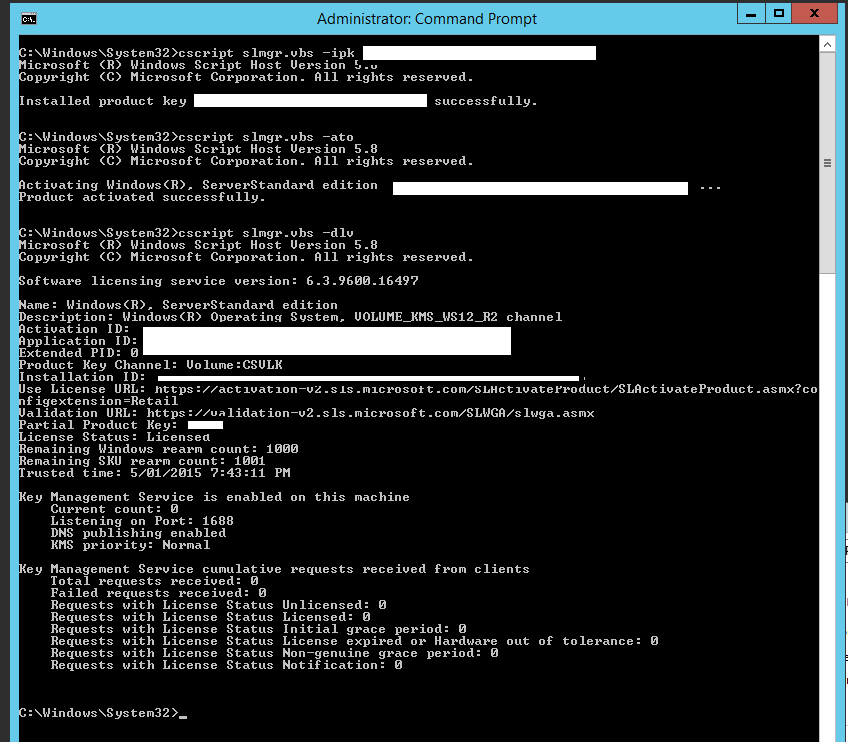


Windows 8.1 and Windows Server 2012 R2 use the KMS Client key by default after installation so you shouldn’t need to change anything to get your clients activated, but in case you need them, the KMS Client keys for all operating systems supporting KMS are available from. Windows 8.1 Enterprise: MHF9N-XY6XB-WVXMC-BTDCT-MKKG7. Windows Server 2012 R2 Datacenter (for Hyper-V server installs): W3GGN-FT8W3-Y4M27-J84CP-Q3VJ9. Instructions for applying the new key with slmgr.vbs is given on the link above. The KMS keys we’ll be most interested in are these: Windows Server 2012 R2 Standard (for most server installs): D2N9P-3P6X9-2R39C-7RTCD-MDVJX. Installation of the update requires a KMS Host restart and you will need to obtain a new KMS Host key from your Microsoft Volume License Center account. You can get the download for the update from.

In my scenario, our VLSC site showed a KMS key for Windows Server 2012 and Windows 8, so I used the Windows Server 2012 key.
#Windows 2012 r2 kms key client install#
With each new release of Windows client and server operating systems nowadays, comes an update required to allow your on premise KMS host to activate those new operating system servers and clients using volume license activation.Īfter the general availability on Windows 8.1 Enterprise client and Windows Server 2012 R2, Microsoft released the update for KMS host for Windows Server 2008, 2008 R to allow these down level operating systems to activate the latest and greatest. In you install a Windows Server 2012 KMS key, then you will be able to activate any combination of Windows Server 2012, Windows Server 2008 R2, Windows Server 2008, Windows Vista, 7 and 8.


 0 kommentar(er)
0 kommentar(er)
